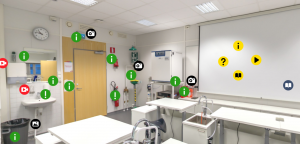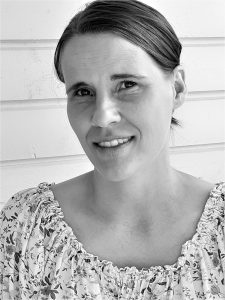The development of education has been at the center in Finland, which has also made international parties interested in the excellence of Finnish education. Among certain universities, it is part of Finland’s national success story, but the rapidly changing world challenges to renew and reform education further. Over the past years, the programs of Finnish governments have emphasized to develop the diversity of education, lifelong learning, more easy access to education, flexible learning paths and the utilization of digitalization.
In the University of Applied Sciences Act, one of the main tasks are the education and training of new experts and to do research, development and innovation (RDI) work where the needs of work life and its development are at the center. In addition, Universities are asked to plan and implement education together with work life. This phenomenon can be seen e.g. in cases where the education is implemented to different areas of Finland having the shortage of the workforce. These cases education is implemented utilizing various online, distance and satellite education models. These new implementation models challenge to reform education.
The Savonia University of Applied Sciences’ degree program in BMLS has developed a new education model, called as satellite education model, during 2014-2017. In this model, students can study remotely in several different locations of Finland. In satellite education model, the hospital laboratory as a working life organization and the University of Applied Sciences as the organizer of education have been jointly designed, implemented and developed the degree program in accordance with their own roles. One of the development challenge has been to increase the student’s education and practical training in authentic environment in work life. This satellite education model aims to meet the above mentioned challenge to reform and renew education.
New training models, like satellite education model, must support the goals described above and also be a cost-effective. Satellite education model combines modern technologies, digitalization opportunities, work life and educational organizations. Education in virtual learning environments at their best increases opportunities combine education, authentic learning environments and surrounding society into the one entity.
Learning environments as a promoter of student competence
The Sotevi- project (Virtual Learning Environments in the Social and Health Sector, funded by ESF), coordinated by Savonia University of Applied Sciences, started to build digital learning environments in which students can study independently, regardless of time and place. This project was a pilot for the project of Future Technologies in Education (FutureEdu). In FutureEdu- project, virtual work life orientated learning environment are developed, whereas in Sotevi-project developed virtual learning environments related to the premises of University of Applied Sciences. In Sotevi-project, learning environments are based on a 360 ° / 3D image corresponding to the real world, where students can virtually move around and learn new issues. This learning take place on the screen of student’s own mobile device or computer.
The laboratory classes in the various expertise areas used by the BMLS degree program of Savonia University of Applied Sciences were described as Matterport (360 ° / 3D) environments (Figure 1). The Matterport description provides a three-dimensional image of the spaces, enabling the student to move virtually within the laboratory spaces and view them, as well as to become familiar with the learning materials there. These created environments can be used already when applying for studies, getting more familiar with study facilities and studying in certain clinical laboratory expertise area. All the study contents of the professional studies, based on to the curriculum, can be rebuilt to those learning environments.
 Figure 1. Matterport (360 ° / 3D) environments in the degree programme of Biomedical Laboratory Science.
Figure 1. Matterport (360 ° / 3D) environments in the degree programme of Biomedical Laboratory Science.
Thinglink application can be used to make virtual descriptions of the environment for teaching. The teacher can embed additional information into the Thinglink environment with pictures, videos, sound, theoretical information or interactive presentations concerning the topic to be learned. The Thinglink was used to build a section related to the module named as “Learning Clinical Laboratory Work” (Figure 2). In this module students can study all theoretical knowledge and practical operating models related to the safe working in clinical laboratory and also some basic working methods of clinical laboratory work, regardless of time and place.
 Figure 2. Thinglink environment concerning the module named as “Learning Clinical Laboratory Work”.
Figure 2. Thinglink environment concerning the module named as “Learning Clinical Laboratory Work”.
iSpring Suite is a PowerPoint-based learning environment creation tool that allows a teacher to take slide-based courses, knowledge tests, interactive simulations, video lectures, and other interactive learning materials. With the help of the application, a Laboratory safety competence- test was performed for the module described above. With the test, the student demonstrates his / her competence, receives immediate feedback and guidance if there are deficiencies in the competence. The teacher receives information about the completion of the section when the student’s competence is sufficient. After this knowledge test, the student can practice what they have learned in a real clinical laboratory environment.
Creating a learning environment where the student is a key player is a challenge for the teacher. The use of the game as a pedagogical tool supports the student’s own role as an active learner and actor. The purpose of the “Labor-Antti blood sampling game” created in the Sotevi- project was to learn the steps of the venous blood sampling process. The game offers the student a meaningful way to learn new things. In the role of an active actor, the student has to process the information learned and think about how he or she can apply what he or she has learned in practice. Playing can be an effective, fun, and encouraging way to learn. The feedback is immediate and you can follow the learning progress by yourself.
Virtual learning environments from the perspective of the students and the teachers
The digitalization of activities and services and the development of new technology challenge teachers to develop a new kind of pedagogical development and change in study practices. Methods that enable teaching and learning have been developed for a long time with the help of technology. This has enabled students to study more and more independently through online. New technologies make it possible to transfer teaching to virtual learning environments. These learning environments do not require the student to be physically present during lessons. They can have spaces that virtually simulate an authentic environment and in which the student can combine theoretical knowledge with practice. In addition, it is possible to return to the learning material over and over again according to their own needs.
From a teacher’s perspective, moving content to virtual learning environments takes time, but rewards when the work is done. Virtual and augmented reality (VR, AR) can be implemented on a wide variety of hardware and at many levels. It must be remembered, however, that a virtual environment cannot replace training in a real laboratory. Learning skills such as social and interaction skills as well as manual skills takes place best in real environments. Virtual learning environments develop satellite training in Savonia and provide new opportunities for both national and international distance learning.
From the student’s point of view, the advantages of virtual learning environments are e.g. the fact that the student can return to the study material over and over again or practice in multi-stage laboratory research processes. Flexible learning environments increase the opportunity for more students to study according to their own schedule. Studying in virtual environments increases the responsibility for the learning process from teacher to student. The effectiveness of virtual learning environments was also studied in the Sotevi-project. The preliminary results were encouraging.
According to the results, the learning outcomes have been good. The technical usability of the materials was felt to be very good. The material was interesting, of high quality in content and relevant information was easy to find. Learning environments promoted and accelerated learning. The pedagogical usability of the study material was also found to be good. The learning materials were considered to be well suited to this content of learning. In addition, the content was perceived as relevant to the profession. The learning objectives were clearly stated and the learning material clarified and motivated the students to study the content. Compared to traditional learning material, this type of virtual learning material brought an added value to learning. The study material is well suited for practice. The learning test that accompanies the learning material provided useful feedback on learning. Students wanted a similar type of virtual environments for other learning entities as well.
Conclusions
One of the novelty values of the project is the virtual learning environments created in the Savonia BMLS degree program. They offer students a new way to learn. These virtual environments takes the learning experience to a new level. Good virtual learning experiences can increase the attractiveness, effectiveness and quality of education. In the future, the virtual learning environments of Savonia’s laboratory facilities will be expanded to the different areas of expertise areas of the clinical laboratory. The student can virtually move from one class to other and choose the specialty or topic to be studied at any given time. Teaching material is added to virtual learning environments in the form of texts, images, videos, video lectures, work instructions, interactive tests or experiments.
In this project, Savonia’s research and innovation activities will open up new channels of effectiveness for the following projects, which will develop education based on students and working life. The development of satellite training with virtual learning environments enables a diverse training offer that can be utilized by different user groups.
Authors: Sirkka-Liisa Halimaa and Anssi Mähönen



 Figure 1. Matterport (360 ° / 3D) environments in the degree programme of Biomedical Laboratory Science.
Figure 1. Matterport (360 ° / 3D) environments in the degree programme of Biomedical Laboratory Science. Figure 2. Thinglink environment concerning the module named as “Learning Clinical Laboratory Work”.
Figure 2. Thinglink environment concerning the module named as “Learning Clinical Laboratory Work”.